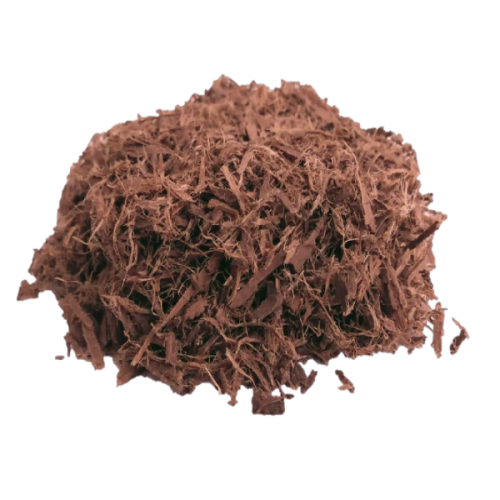Mimosa Hostilis Root Bark holds a substantial put in common methods and fashionable botanical apps. This article explores the properties, origins, and common queries surrounding this remarkable plant product, with a selected focus on the prized Brazillian Mimosa Hostilis Root Barks.
What is Mimosa Hostilis Root Bark?
Mimosa Hostilis, scientifically generally known as Mimosa tenuiflora, is usually a perennial tree indigenous into the northeastern region of Brazil and portions of Mexico. The basis bark of the tree is used for centuries by indigenous communities for many functional and standard reasons. The interior root bark has noteworthy concentrations of tannins, alkaloids, together with other phytochemicals that contribute to its distinctive Homes and apps.
The tree by itself is remarkably resilient, capable of surviving in poor soils and drought disorders. This hardiness contributes into the sturdy character in the bark and its chemical profile. When harvested sustainably, the outer root bark is carefully divided to access the valuable inner bark, that is then dried and geared up for use.
Brazilian Mimosa Hostilis Root Bark: The Gold Normal
When talking about high-quality in Mimosa Hostilis items, the Brazillian Mimosa Hostilis Root Barks are typically considered top-quality in the botanical industry. Various things add to this status:
Optimum Developing Disorders
The specific soil composition, local weather, and ecosystem of Brazil's northeastern area create great problems for Mimosa tenuiflora to develop its whole chemical probable. The mineral-loaded soils and distinct sample of rainfall and sunlight On this place show up to boost the focus of Energetic compounds in the basis bark.Conventional Harvesting Information
In areas exactly where Mimosa Hostilis continues to be applied customarily, harvesters have created sophisticated procedures for sustainable harvesting that preserves the two the tree as well as potency in the bark. This expertise, passed down by generations, ensures that the bark is collected at the best time of yr and processed working with methods that manage its integrity.Distinctive Bodily Characteristics
Brazilian Mimosa Hostilis Root Bark normally shows a loaded reddish-brown to purple inner bark that has a fibrous, dense texture. The visual properties normally serve as an First indicator of excellent, with seasoned end users recognizing the unique visual appeal of bark from this area.
Popular Purposes and Uses
The programs of Mimosa Hostilis Root Bark span equally common and modern contexts, even though it's crucial to be aware of the lawful standing of those employs varies by nation and jurisdiction.
Standard Craft and Exercise
Indigenous communities have Traditionally employed Mimosa Hostilis Root Bark for creating organic dyes for textiles, with the bark developing lovely shades of purple, burgundy, and deep brown. The tannin-prosperous Houses also made it beneficial for leather-based tanning and other sensible apps.Modern Botanical Research
Modern day curiosity in Mimosa Hostilis Root Bark extends to numerous fields of botanical exploration, especially researching its chemical composition and potential programs. Scientists have discovered a number of interesting compounds throughout the bark that warrant more scientific investigation.Horticultural and Agricultural Takes advantage of
In permaculture and sustainable agriculture, Mimosa tenuiflora is valued for a nitrogen-repairing species that may enhance soil high quality. The bark itself, when processed, can be used for a purely natural mulch or soil Modification in certain agricultural contexts.Quality Assessment and Identification

For people working with Mimosa Hostilis Root Bark, knowledge how you can evaluate high-quality is crucial. Higher-high quality product, especially authentic Brazillian Mimosa Hostilis Root Barks, typically reveals selected features:
The visual visual appearance must demonstrate a Brazillian Mimosa Hostilis Root Barks clear difference in between the outer and interior bark, Using the interior bark exhibiting deep, vivid colours. The fabric should have a attribute earthy, a little bit sweet aroma, no cost from musty or moldy notes. When processed, the bark really should yield a good powder whilst sustaining its fibrous framework until finally grinding. Adequately dried bark should be brittle but not dusty, indicating suitable dampness information.
Routinely Questioned Inquiries (FAQs)
one. What is the difference between Mimosa Hostilis Root Bark from Brazil and various locations?
Brazilian Mimosa Hostilis Root Bark is generally viewed as exceptional due to exceptional expanding ailments in northeastern Brazil, which cause increased concentrations of active compounds. The standard harvesting strategies made use of Within this location also lead to the general good quality and potency of the ultimate merchandise.two. How must I retail outlet Mimosa Hostilis Root Bark to maintain its high quality?
Shop the bark in a very amazing, dim, and dry location in an airtight container. Security from mild, moisture, and Intense temperature fluctuations might help protect the bark's chemical integrity and forestall degradation of its active factors.three. Is Mimosa Hostilis an endangered species?
No, Mimosa tenuiflora is not currently outlined as an endangered species. In actual fact, it's known for its resilient expansion and ability to thrive in challenging situations. Nevertheless, dependable harvesting techniques remain important to make sure the sustainability of wild populations.four. Am i able to increase Mimosa Hostilis outside of its indigenous habitat?
Whilst Mimosa tenuiflora thrives most effective in its native tropical local weather, it may be cultivated in related environments. The tree calls for very well-drained soil, a lot of sunlight, and defense from frost. On the other hand, the chemical profile of cultivated specimens might vary from wild-harvested Brazilian substance.five. Exactly what is the lawful status of Mimosa Hostilis Root Bark?
The authorized standing may differ noticeably by nation and jurisdiction. In some sites, the Uncooked bark is legal to possess, even though in Other individuals, unique extracts or preparations may very well be regulated. Usually study and comply with nearby regulations and regulations prior to buying or applying any botanical substance.Understanding Mimosa Hostilis Root Bark, specifically the high quality Brazillian Mimosa Hostilis Root Barks, involves appreciation of its botanical characteristics, classic context, and correct purposes. Irrespective of whether for exploration, craftsmanship, or botanical examine, this impressive plant materials proceeds to become a topic of fascination throughout many fields, nevertheless always inside of ideal authorized and ethical boundaries.